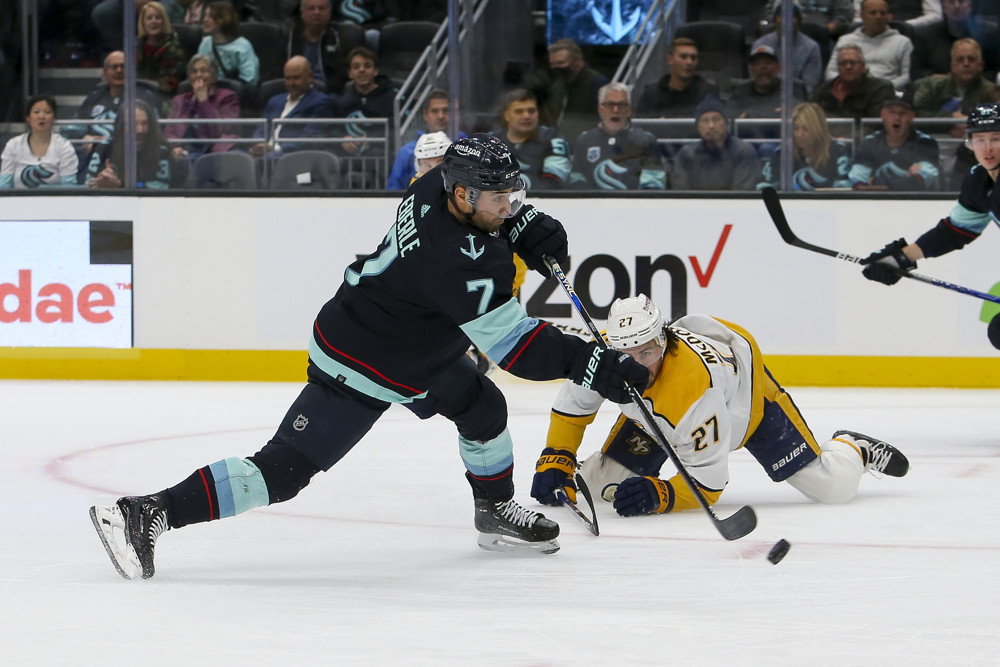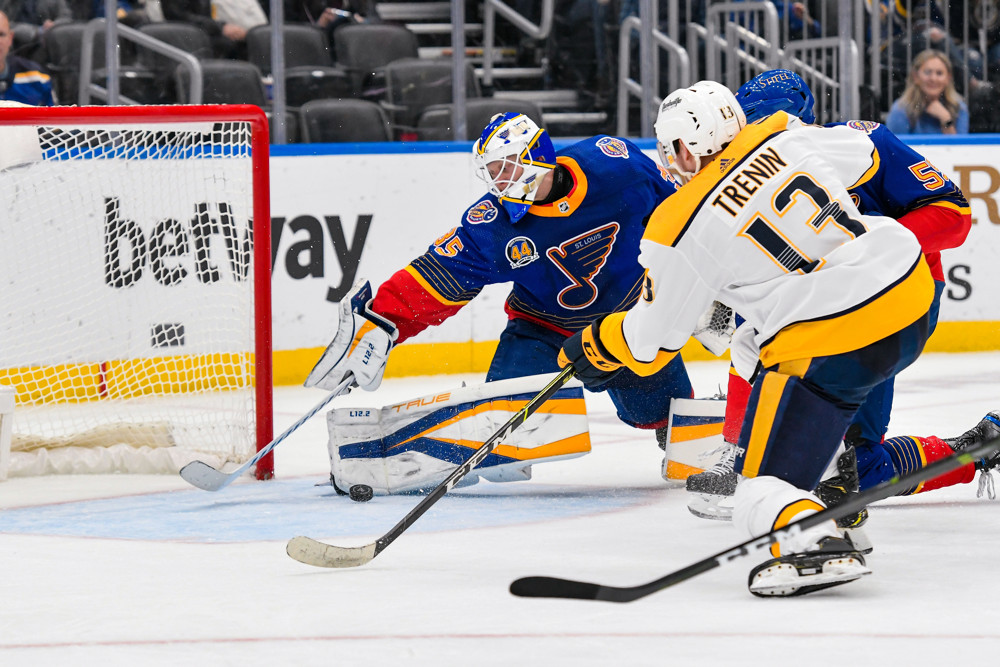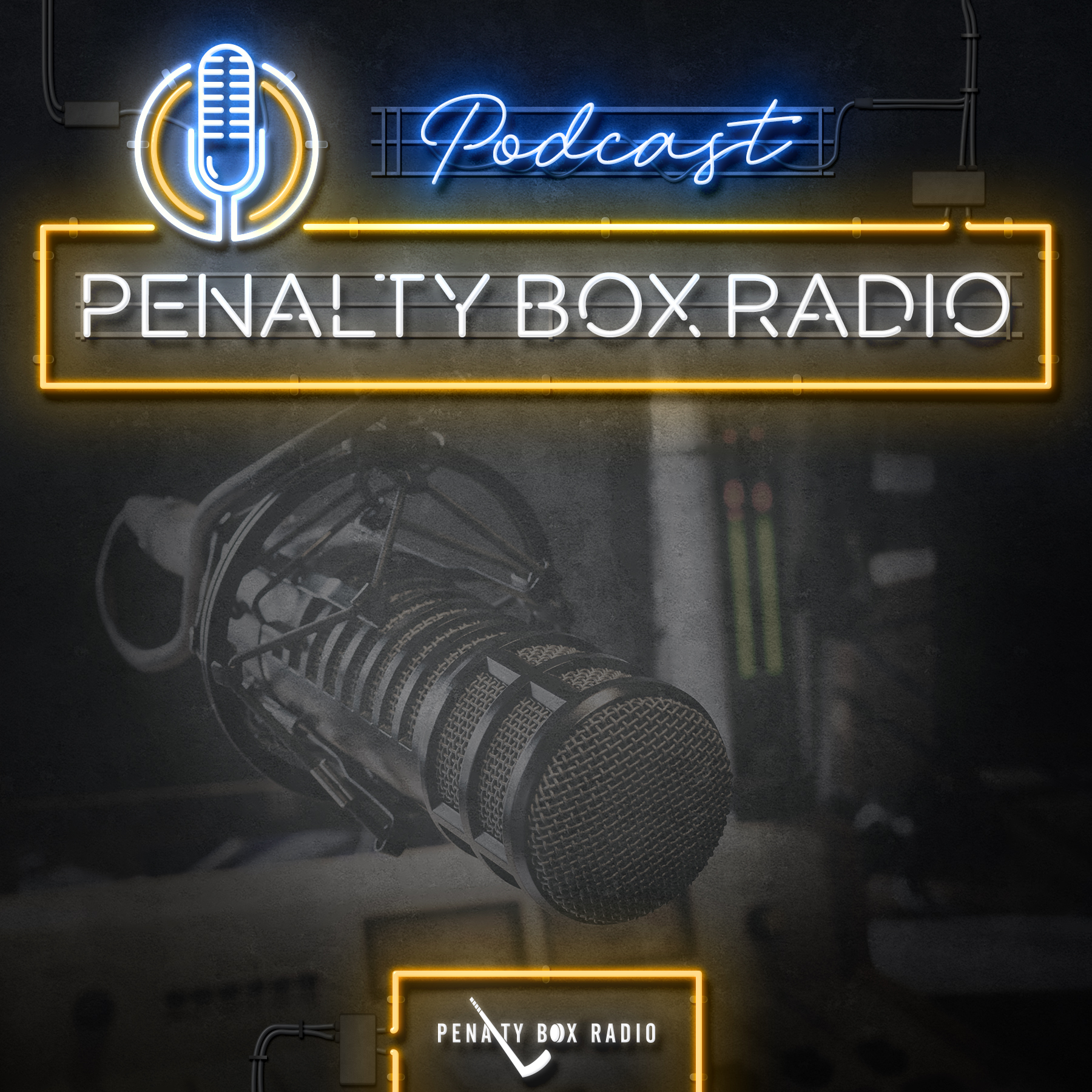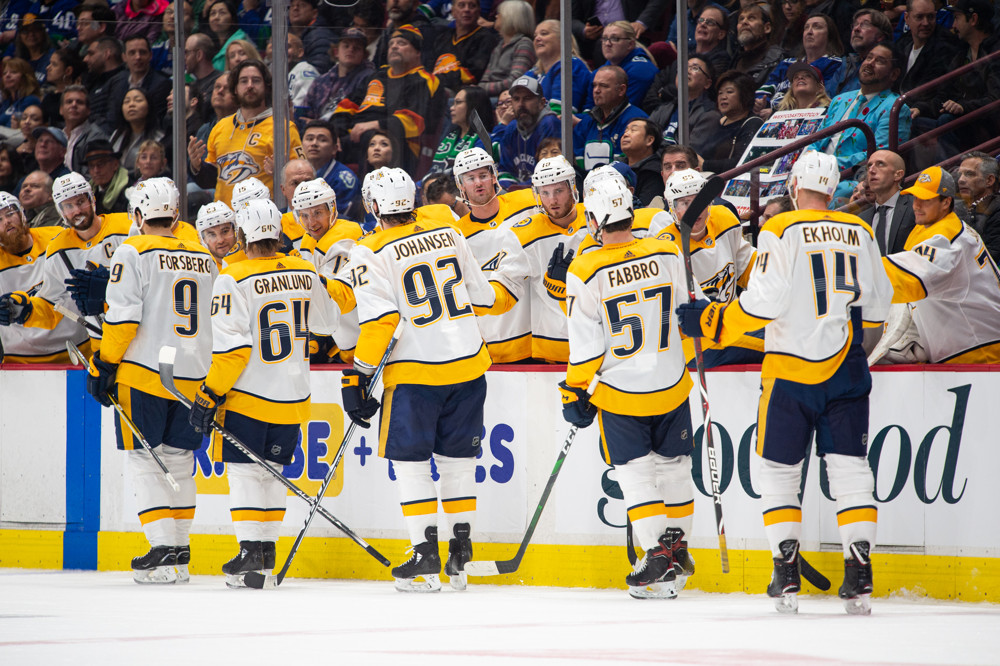
I love upsets. Give me UMBC over Virginia in March Madness, give me Appalachian State over Michigan, give me Columbus over Tampa. Upsets are what I love about sports. They’re often unpredictable and something that might never be replicated. Herb Brooks said it best, “if we played ’em ten times, we might lose nine, but not this game.” Just thinking about it has me ready to run through a brick wall. Unfortunately, what Nashville and Dallas fans saw over the past week was not an upset.
The Nashville Predators might’ve been the first seed in the Central, but it was truly a race to mediocrity. St Louis probably deserved it, but they got off to a terrible start and didn’t start trying till December. That left the Winnipeg Jets and Predators to duke it out.

As both teams slid backwards into the playoffs, one thing became very clear. There were absolutely no favorites. The Blues and Stars proved that as they dispatched the first and second seed in the Central in six games.
So, let’s take a bit of a dive into what unfolded before our eyes. It wasn’t all negative, so why not begin with some positivity. As always, all stats below are at five on five. Don’t worry though, we’ll get to the powerplay.
The Good
The Predators actually pushed the pace of play for most of the games. Now, there is a qualifier here, the Dallas Stars are often outshot but survive by taking their shots from key areas while not allowing many from there. That was certainly the case here but good on the Predators for taking the shots in front of them. 53.16% of shot attempts and 53.66% of shots on net are nothing to sneeze at.
Rocco Grimaldi had a surprisingly good series, you could tell he desperately

wanted another contract. His three goals were first on the club while his 14 shots were second. He was also creating a lot of quality chances as he had five high danger chances and the fifth most expected goals created. He was quick along the perimeter and was seemingly the only Predator who could enter the offensive zone with possession. Scratching him the first few games was certainly a mistake, although recent news has revealed he was injured before the playoffs.
No one is going to want to hear this, but here goes. P.K. Subban was the best Predator by a country mile, except for maybe Pekka Rinne. Subban dominated the Stars in terms of quantity with a 59.92% shot attempt share 62.86% shot share. Quality is where he shined though, as Subban produced a 58.82% scoring chance share and 57.41% high danger chance share.

No one played like Subban. He had the best on-ice stats of any defender while starting in the defensive zone more than any of his peers. His goal share was bad with four scored and seven against, but his expected goals was quite literally the opposite, 7.13 for and 4.24 against. This is easily explained though, as he faced the toughest competition of anyone on the club.
From my personal stats tracked, Subban excited the zone with possession like a machine. His passing ability was on full display and it didn’t disappoint. If you think he was part of the problem, please go back and re-watch the series.

I really liked Dante Fabbro. All of his on-ice numbers were above 50% but he was relatively sheltered. It was pretty obvious that Fabbro was more intent on not making a mistake more so than doing the right thing. He took a page out of Dan Hamhuis’ book and dumped the puck out of the defensive zone more times than I’d like to admit, but there were flashes of brilliance. A full season could give Fabbro the confidence to make better plays.
Pekka Rinne kept the Predators in it for much of the games but ended with some very mediocre stats. A .904 save percentage and -.57 goals saved above average aren’t indicative of the kind of series Rinne played. It stinks that the team in front of him wasted another year.
The Bad
I’m going to do my best to not turn this into some beatnik stream of consciousness, but i make very few promises. There was a lot of bad, so let’s start with some broader strokes.

I talked earlier about how the Predators couldn’t create too many quality chances, but they also gave up more than usual. In the regular season, the Predators gave up 8.59 high danger chances per game but surrendered 10.83 per game in the playoffs. Roman Josi and Ryan Ellis were the biggest culprits in this regard. They were on the ice for 28 of Dallas’ total 65, that’s unacceptable from your “top unit”.
Josi and Ellis had terrible series, they faced the second line for the majority of the series. No disrespect to Roope Hintz and Jamie Benn, but I’d much rather face them than Tyler Seguin and Alex Radulov, who were both held to almost nothing when Subban and Ekholm were on the ice. Josi and Ellis were both held to sub 50% on ice numbers despite starting 59.49% of shifts in the offensive zone. Ellis might as well played in the defensive zone without a stick because he couldn’t exit the zone to save his life, meanwhile, Josi barely exited the zone 60% of the time, and that’s including dump outs.

If we’re going to discuss the Josi and Ellis’ failures, we should probably talk about the top forward line. If I maybe had one too many adult beverages and you were really impassioned, I could probably be talked into thinking that the first line didn’t see the ice at all. They were the embodiment of the Predators’ problems, they owned quantity but only produced 12 high danger chances in 6 games, a full high danger chance fewer than the 3.10 average JoFA had in the regular season.
It also doesn’t help regression hit in a major way. Viktor Arvidsson couldn’t shoot 18% forever, Filip Forsberg just kind of stopped shooting as the series went on, and I thought Ryan Johansen was fine. But fine really doesn’t cut it. The Predators needed JoFA, and JoFA was nowhere to be found.
I could do an equally eviscerating post about each and every forward line. They were wholly terrible. The “shutdown line” got their butts handed to them by every line that they saw, no matter if it was the first, second, or third. Every line struggled and very rarely did any Predator manage to create a chance to do some damage.
The (Very) Ugly

Alright, let’s start with the powerplay. Going zero for 15 is an absolute joke and my favorite part is, it didn’t come out of nowhere. The power play has been this stagnant for the last year and a half, yet no adjustments were made. I understand waiting for your luck to come around, but if it hasn’t come around by now, then do something different. It’s not difficult to change!
Just take a long weekend and watch Tampa’s or Toronto’s or San Jose’s powerplay! Copy them and make little changes as things stop working. Who do we think is to blame, a group that features the skill of Johansen, Forsberg, Arvidsson, Subban, and Josi? Or a coaching staff who made these plans years ago and decided to write them in stone.
Honestly, watch Dallas’ powerplay and copy them to the letter. They never

shot the puck unless it had been passed through the slot and rarely waited more than two seconds to get it off their sticks. By moving the puck around, they forced Rinne to adjust and it ended up creating a lot of havoc. But who knows, maybe THIS Ryan Ellis slapshot that’s already been tried four times this powerplay is the one to go in.
Someone deserves to be fired (even though it most likely won’t happen). Which brings me to my next point, Peter Laviolette was completely out-coached by first time NHL coach Jim Montgomery. I discussed how Laviolette used the third line in a shutdown role, which is a fine experiment to try. But when things didn’t work, no adjustments were made and so nothing changed.
My biggest gripe was the forecheck. The Predators love to play a high 1-2-2, where a forward is hard on the puck while his two linemates wait above the circles and try to predict the breakout pass so they can create a turnover. It’s a fine style in the regular season but it’s easy to gameplan against after the other team knows what’s happening. The Stars defensive structure collapses well to the slot, but typically their forwards hang high in the zone to stretch the other team, not much unlike the Predators. The forecheck typically looks like this. The blue triangles are the Predators while the green are the Stars.

F1 attacks the puck carrier while F2 and F3 wait in the high slot for a turnover or pass.
Here’s where things get complicated, the Stars were more than happy to move horizontally along the ice rather than just trying to straight up. The Predators forecheck actually worked for the first game and a half, but the Stars made a huge adjustment that changed everything. Dallas started moving the puck well behind the net, forcing the Predators to re-adjust on the fly. Below is how the forecheck would adjust in a perfect world.

After the puck is moved to D2, F3 attacks the puck while F2 skates to the other boards in an attempt to support. Meanwhile, F1 disengaged with the puck carrier and moves to the high slot area.
So what’s the big deal? The Predators are fairly fast skaters and are good at making those in zone adjustments. What bit them in the backside is that Dallas’ center stopped supporting after the puck was moved. Once the puck left D1’s stick, the center would take off up the ice.

As soon as D2 received the pass, he would start to skate up the ice in order to make an angle for himself. While this happened, both Dallas wingers would leave the zone and force the Predators’ defense to respect the long stretch pass. This created a great window for speedy centers like Tyler Seguin and Roope Hintz, who often caught the Predators forecheck with their pants down.
After game 4 or so, the Predators started to catch on and moved their wingers even higher in the zone. This meant fewer pass options for the Stars’ defense, but more room for them to skate. John Klingberg, Miro Heiskanen, and Esa Lindell were more than happy to use that space to create clean zone exits.
The Predators never figured out a way to stop the Stars’ breakout, and it killed them. They relied so heavily on dump and chase hockey that it exposed the entire system, and when the coaching staff refused to stop dumping in pucks, the problems grew worse and worse.
Why The Predators Fell Short
I vehemently believe the Predators were the more talented team in this matchup. Yes, they ran into hot goaltending, but it was far from 2010 Jaroslav Halak. The Predators lost because when push came to shove, they had nothing else besides plan A.
There was seemingly no game planning for matchups, no adjustments made on the fly, and every player was essentially told to go out there and play with “heart”. I agree that there are intangible elements that help win hockey games, but I’m not sure the lack of those were the reasons the Predators lost.
Things must change if success is expected. It’s clear that this group (coaching staff and roster) aren’t going to make it happen. I don’t think major shakeups are necessary, but a shiny new special teams coach who has a fresh take could be the best free agent signing the Predators could make.
Otherwise, learn from your mistakes. Cut your losses and let Wayne Simmonds walk off into the sunlight of a five million dollars per year contract somewhere else. Allow Turris and Smith to form chemistry with Mikael Granlund, and maybe try to unload a certain center’s four million dollar contract…
The cup window hasn’t closed. This group has a few more kicks at the can, but the leash is getting shorter. I really hope the Predators try something new, because what we saw this year won’t cut it, not by a long shot.










